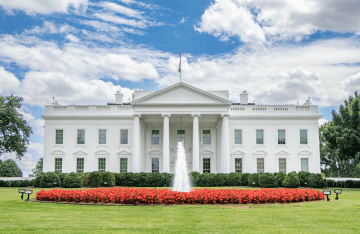Why Unions Matter for Nursing
A new study examines nursing’s relationship to union organizing and feminism, as well as the profession’s unique organizing challenges.

Photo by Amir Arabshahi on Unsplash
In recent years, organized labor participation has risen in the United States, with workers collectively negotiating for better wages and equitable working conditions. Nurses are organizing at a particularly high rate; according to the Bureau of Labor Statistics, over 20% belong to a collective bargaining unit, as compared to a national average of 13% across other professions.
A new paper, “More than handmaids: Nursing, labor activism and feminism”, focuses on why nurses have committed so strongly to unions, providing nuanced insights into the relationships between nursing, feminism, and labor organizing from the firsthand perspectives of union nurses. As the study reveals, gendered norms and assumptions, along with a complicated relationship to past feminist movements, have resulted in ongoing labor organizing challenges in the profession.
Drawing on interviews with women nurses involved with the California Nurses Association (CNA) at Children's Hospital Oakland in Oakland, CA, the study grew out of conversations between Jessa Lingel, Associate Professor at Penn’s Annenberg School for Communication, and Kim Branciforte, a registered nurse and nurse educator based in California, who also happens to be Lingel’s sister.
“Even before the pandemic, there was a shift in the longevity of nursing careers. Nurses are coming into the field later, as second and third careers, and leaving the bedside sooner for advanced practice positions, education, research, or leaving medicine entirely,” Branciforte says. “I felt desperate to capture even a glimmer of the sagacity of my colleagues.”
The paper was motivated by this desire to document the working lives of union nurses, as well as to understand the connections between feminism and labor activism in the nursing field. Lingel and Branciforte reached out to co-author Rosemary Clark-Parsons, Program Manager at the Center for Social Impact Strategy (CSIS) and part-time faculty at Penn’s School of Social Policy and Practice (SP2), to help analyze the data.
Impact of Second-Wave Feminism
The researchers specifically interviewed nurses at the end of their careers, which allowed them to analyze participants’ experiences in relation to feminist politics. The second-wave movement, which began in the 1960s, emphasized gender equity in the workplace and urged women to leave traditionally “feminine” professions – for instance, encouraging women to become doctors instead of nurses. These discourses undervalued the work of women in feminized career paths, making them feel belittled.
“The nurses we interviewed came to the profession in the 1970s and ‘80s, at a time when feminism was pushing women into fields that were historically dominated by men,” Lingel says. “Many of our participants felt disconnected from feminism, which saw nursing as conventionally feminized.”

“Reading participants’ stories about organizing labor strikes, building lifelong friendships through union work, and cultivating the courage to push for policy reforms was really moving,” adds Clark-Parsons. “The nurses Jessa and Kim spoke to risked their jobs and fought for a voice in male-dominated labor movements. These are veteran activists and organizers, pushing against a profession that undervalues them and a movement history that has largely sidelined them. So it was really striking when, either implicitly or explicitly, participants expressed a discomfort or disconnection with feminist politics.”
The authors initially expected participants to connect their nursing work to feminism, but the interviews revealed lingering tensions. In fact, participants were nearly unanimous in seeing their work as categorically not feminist. Conversations with faculty from Penn’s School of Nursing, including Julie Fairman, Cynthia Connolly, and Pat D’Antonio, helped the authors contextualize what they were seeing in the data.
“The scholarship shared by colleagues at Penn Nursing helped me see that our participants were still feeling the echoes of a second-wave feminist movement that saw nursing as playing into conventional gender roles,” Lingel says. “As a feminist scholar, I saw this as a really important reminder that political theories can have long standing consequences.”
Union Work and Building Alliances
In contrast, participants shared that local unions provided a sense of empowerment and opportunities for health justice advocacy in their workplace and communities. Traditional views of “feminized” occupations such as nursing emphasize self-sacrifice and humility, suggesting that women are innately compassionate and sympathetic, and therefore suited for this work – rather than centering professional skills and knowledge. Union work goes against such gendered expectations through demanding improved working conditions, professional respect, and increased autonomy. Activism within the CNA empowered the nurses to take action in their professional lives, defying gendered assumptions.

“Participants felt that union work was more connected to feminism, in that the union was led by women and gave them a space for collective power and consciousness raising,” Lingel says. “My favorite parts of our interviews were around the sense of solidarity that the women built with each other around union work – their collective struggles to fight for their patients’ needs, for their families, and for each other as workers. I was very moved by their accounts of how powerful union work can be!”
Understanding the connections and tensions between feminism and union organizing, the authors note, is crucial in building alliances among unions and feminist groups. Feminism can play a major role in labor activism, but it must contend with the lingering effects of second-wave attitudes toward occupations such as nursing. As feminism and the nursing profession both continue to evolve, movements must commit to intersectionality, workers’ rights, grassroots organizing, and coalition building.
“I actually believe that the pandemic has given us an opportunity to grow union participation,” Branciforte says. “I hope that we as a community and a nation don’t let that opportunity pass us by.”



